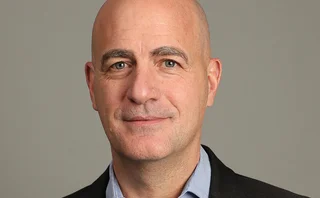
Currency derivatives house of the year: Standard Chartered
Asia Risk Awards 2019

For multinational corporations that are exposed to currency market volatility, the cost of hedging is crucial.
The challenge only intensifies for banks such as Standard Chartered that play in illiquid markets that are prone to large swings. The emerging markets-focused bank last year unveiled a systematically optimised funding strategy called the Synthetic Borrowing Unit (SBU) to offset such difficulties and it has been a hit with clients. The SBU is composed of a basket of G10, Asian and emerging market currencies.
More such innovative products have been rolled out by Standard Chartered to complement the SBU and minimise currency risk for clients. Other products include target redemption forward with delayed settlement to ease clients’ pain after the greenback strengthened late last year and solutions that offer long-term hedges in illiquid markets.
The SBU, in particular, has served clients well. The head of treasury at a UK FTSE 100 company, which has currency exposures in many smaller Asian markets, says his corporation has already used the strategy and has been happy with the result.
This firm has a policy of hedging through the debt markets, as long as profit and cashflows from that market are at least 15% of the group’s total. Such a policy excludes all but the sterling and US dollar markets, and leaves the company with a large basket of currencies that are potentially very costly to hedge.
To sidestep that, the company turned to the SBU.
Through careful engineering and product management, Standard Chartered’s SBU is able to maintain a minimum 2% interest rate spread against the dollar while minimising currency volatility. In order to reduce borrowing costs, clients have the option of swapping their existing US-dollar liabilities into SBU. In return, the client is exposed to the exchange rate risk of SBU against the US dollar at maturity.
Such a strategy also generates 2%-a-year savings against the greenback, while minimising any associated currency risk.
“Standard Chartered is managing this basket against dollar volatility so there’s minimal volatility against the dollar rate,” says the treasury head. “This means when we convert, we get more or less the same volatility as we would if we converted dollars into sterling. On top of that we get 2% interest over the dollar rate every six months, so we’re pretty happy with the product.”
The company has only been using the product for six months, and so it retains the option to trade out of it should things start to go the wrong direction. However, so far the product has proved very resilient and the treasury head does not think this is likely.
The product was first trialled in 2017, when it was offered to a few select clients that had specific forex hedging needs. It was only in the latter half of 2018 that Standard Chartered began actively marketing the product to a broader range of clients, with Bloomberg calculating and publishing the synthetic currency on its terminals.
SBU is our flagship product at the moment, both because it’s new and because very few of our peers are able to offer a solution that is comparable in terms of economic risk/reward
Kunal Datta, Standard Chartered
“The product idea was born out of conversations that we were starting to have with a number of multinational corporations, which have large multi-currency asset portfolios as well as multi-currency liability or debt portfolios, and sought analysis and input on how to optimise the currency mix of their liabilities to reduce weighted average cost of borrowings without unduly increasing forex risk,” says Kunal Datta, global head of foreign exchange structuring at Standard Chartered.
“SBU is our flagship product at the moment, both because it’s new and because very few of our peers are able to offer a solution that is comparable in terms of economic risk/reward.”
One of the biggest draws of the new product is that it is straightforward for firms to access and to transact, which means Standard Chartered has had little difficulty in attracting new clients to the fold, once they demonstrate how much can be saved in terms of cost compared with their traditional hedging methods.
“From a client perspective, the new product is actually not a massive leap of faith,” says Alex Axentiev, global head of forex options at the bank. “Essentially, it behaves like a low-volatility currency pair against the dollar, and thus closer to what clients are familiar with when borrowing in foreign currency, and lower volatility if looking at results in USD.”
SBU uses cash-settled cross-currency swaps, which any client that has foreign-currency borrowing should be familiar with. The synthetic currency can also be integrated with other solutions that Standard Chartered offers, such as debt-financing packages. This is a slightly more involved process, but appeals to those sophisticated firms that want greater control over their currency hedging.
It is also transparent, giving clients visibility on how the currency is performing and therefore how their hedges are holding up.
“We want to be completely transparent to clients so that there can be no real or perceived conflict of interest,” says Axentiev. “Right from inception, the client knows roughly where the SBU dollar forward will be at any given point of time for a given maturity, so the mark-to-market on an SBU swap will almost never be a surprise.”
The SBU dollar forward rate can be calculated in much the same way as, say, a forward between euro and dollar.
This approach has certainly been welcomed by those that use the SBU. “The fact that we can monitor this means we have full comfort in justifying exposure to the product to our board,” says the corporate treasury head quoted above.
The apparent simplicity and transparency of the product belies the complexity that underpins the offering.
“SBU relies on a technology that has been used quite a lot on the asset side, typically to generate high returns either as an FX Index product offering or within the FX bucket of a multi-asset product offering,” says Datta. “Things like quantitative impact investing and rule-based strategies offered across asset classes. Given the depth of our relationships with corporate treasurers, we realised there was a need – perhaps even a greater need – for this technology on the liability side.”
Cost-effective innovation
There are other innovations, too, that have been well received.
“Innovation is not merely about the sophistication of a new product,” says Geoff Kot, global head of forex trading. “It’s also about being able to offer the right solution at the right price, often in very uncertain market environments. It’s about having sound risk-management practices and being able to operate in both liquid as well as illiquid currencies.”
This is certainly appreciated by clients across Asia.
A senior member of the treasury department of one large Philippines-based company says: “In terms of volume, Standard Chartered is my number one bank, largely because of their short-term and long-term structured products, which range from standard non-deliverable forwards to call spreads, leveraged forwards, capped forwards and target redemption forwards.”
The company does 30% of its long-term currency hedges with the bank, more than with any other counterparty. It recently put on a three-and-a-half-year call spread with Standard Chartered, which used a step-up structure to generate far more attractive pricing than any of the bank’s competitors could offer.
“Whatever hedging requirements I have I can go to them, speak with them and they will come up with the right products to suit my requirements. In terms of creativity and speed, Standard Chartered is the first bank in my mind,” says the treasury manager.
Being able to offer long-dated hedges in fairly illiquid markets is a constant strength of Standard Chartered that the bank continues to build on.
Innovation is not merely about the sophistication of a new product. It’s also about being able to offer the right solution at the right price
Geoff Kot, Standard Chartered
For instance, late last year, a Thai client was suffering because a strengthening dollar had thrown its forward hedges out of whack with the internal budget rate. As the value of the dollar increased – from 33.01 baht to the dollar at the end of November 2018, to 31.24 baht to the dollar by January end – the strike rate for the forward contract was pushed to levels that were no longer acceptable for management.
The solution that Standard Chartered came up with was a three-year target redemption forward, allowing the client to achieve better hedging rates. If the knockout occurs, the client might re-evaluate its hedging strategy for the unhedged portion based on their own assessment of prevailing market conditions, given that the liability’s maturity date may be relatively far away.
While target redemption forwards of such tenor may be common in developed markets, the lack of liquidity in the Thai baht/US dollar cross means this was a non-trivial solution for Standard Chartered to construct. The size of the transaction – $150 million – was also comparatively large. The deal serves as a testament to both Standard Chartered’s risk-management expertise and its broad global footprint that allows efficient recycling of risk.
“A lot of clients in the region are looking for cost-reduction ideas in their hedging strategy and target redemption forwards is the typical structure. But not everyone can meet the client needs by quoting longer than a year due to credit risk or market risk appetite,” says Herbert Ng, director of rates structuring.
“But for a structure like a target redemption forward, the longer we can do the trade, the longer the client is committed to the trade and the better optics we can get.”
As in previous years when Standard Chartered claimed the title of currency house of the year, the bank’s focus this year has been on bringing innovation to the Asian markets, while stressing the aspect of the deal that clients care most about: how they can bring costs down.
“This year our focus has been on introducing more innovation into the Asian currency markets, whether it’s within flow products – electronification and things like algo trading – or through designing innovative bespoke solutions and-off the-shelf products,” says Datta.
“And at the heart of this we have always been looking at ways to help our clients improve their risk management toolkit, cost of funding or portfolio returns. This customer-centric approach has been appreciated.”
Only users who have a paid subscription or are part of a corporate subscription are able to print or copy content.
To access these options, along with all other subscription benefits, please contact info@risk.net or view our subscription options here: http://subscriptions.risk.net/subscribe
You are currently unable to print this content. Please contact info@risk.net to find out more.
You are currently unable to copy this content. Please contact info@risk.net to find out more.
Copyright Infopro Digital Limited. All rights reserved.
You may share this content using our article tools. Printing this content is for the sole use of the Authorised User (named subscriber), as outlined in our terms and conditions - https://www.infopro-insight.com/terms-conditions/insight-subscriptions/
If you would like to purchase additional rights please email info@risk.net
Copyright Infopro Digital Limited. All rights reserved.
You may share this content using our article tools. Copying this content is for the sole use of the Authorised User (named subscriber), as outlined in our terms and conditions - https://www.infopro-insight.com/terms-conditions/insight-subscriptions/
If you would like to purchase additional rights please email info@risk.net
More on Awards
Joining the dots: banks leverage tech advancements for the future of regulatory reporting
The continued evolution of regulatory frameworks is creating mounting challenges for capital markets firms in achieving comprehensive and cost-effectiveawa compliance reporting. Regnology discusses how firms are starting to use a synthesis of emerging…
Markets Technology Awards 2024 winners' review
Vendors spy opportunity in demystifying and democratising – opening up markets and methods to new users
Derivatives house of the year: JP Morgan
Risk Awards 2024: Response to regional banking crisis went far beyond First Republic
Risk Awards 2024: The winners
JP Morgan wins derivatives house, lifetime award for El Karoui, Barclays wins rates
Best product for capital markets: Murex
Asia Risk Awards 2023
Technology vendor of the year: Murex
Asia Risk Awards 2023
Best structured products support system: Murex
Asia Risk Awards 2023
Energy Risk Asia Awards 2023: the winners
Winning firms demonstrate resiliency and robust risk management amid testing times
Most read
- Breaking out of the cells: banks’ long goodbye to spreadsheets
- Too soon to say good riddance to banks’ public enemy number one
- Industry calls for major rethink of Basel III rules







